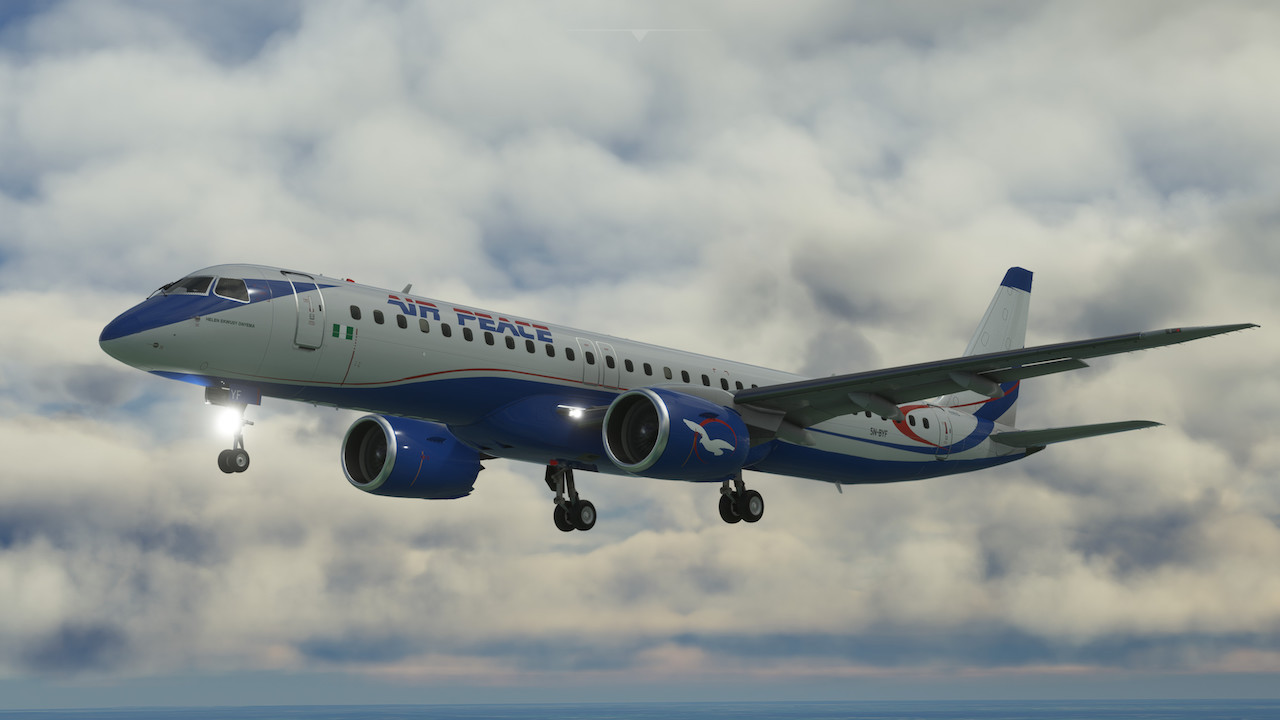– Color of windshield more clear
– Fix to flight dynamics
– Fix to adjust Gear Center nose
– GPWS alert constantly activated, solved
– Documentation included for help
– Missed gauges in MSFS Standard version
The E195-E2 measures 136 feet, 2 inches and has a low main wing with a span of 115 feet, 3 inches. The airliner’s wing has a high aspect ratio design, and is one of the most efficient of any ever engineered. The E195-E2 features an advanced cockpit and fly-by-wire control coupled with a flight control computer that maximizes fuel efficiency.
The aircraft is powered by two wing-mounted Pratt & Whitney PW1919G high-bypass geared turbofan engines that each put out up to 23,000 pounds of thrust. The E195-E2 cruises at 518 miles per hour (Mach 0.78), has a service ceiling of 41,000 feet above sea level, and boasts a range of 2,992 miles.
Refined from its successful predecessors for utmost efficiency, the Embraer E195-E2 delivers distance per fuel load like few other aircraft in its class ever have. The state-of-the-art airliner is also a dream to operate, with its controls exquisitely tuned and balanced, offering a magnificent cockpit experience.
The Embraer E-Jet E2 family are medium-range twinjet airliners designed and produced by the Brazilian aircraft manufacturer Embraer. It was developed as a successor to the original E-Jet family.
The program was launched at the Paris Air Show in June 2013. The E-Jet 2 is a derivative of the original E-Jet family paired with several improvements, chiefly the adoption of more fuel-efficient Pratt & Whitney PW1900G turbofan engines. The family comprises three variants that share the same four-abreast narrow-body fuselage with different lengths and three different new wings, fly-by-wire controls with new avionics, and an updated cabin. The first variant, the E190-E2, made its maiden flight on 23 May 2016 and flight testing proceeded to schedule with little issue. It received certification on 28 February 2018 before entering service with launch customer Widerøe on 24 April. Certification of the larger E195-E2 was received during April 2019; Azul Brazilian Airlines was the first airline to operate this model.
Features:
• 3D Model detailed
• Flight dynamic tested
• Wing-flex
• Original sound including “Whale” sound in minimum revolutions
• 12 repaints of currently airlines of both models
• Detailed cockpit with sounds
• Table with single solutions:
• Ready to Start engines
• Ready to flight
• ON/OFF aural sounds
• Flight attendant voices in 6 languages to selecting
• Cabin passenger detailed
• VR limits (Collision polygons), tested using META OCULUS QUEST 2
• Tested and adjusted to use with Honeycomb and Thrustmaster hardware

